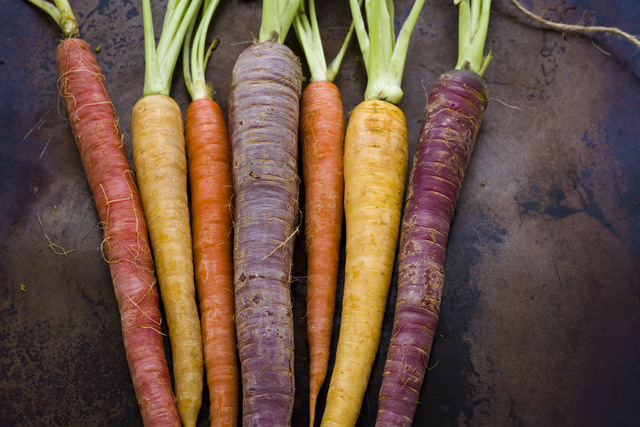Fall brings cooler temperatures ideal for growing leafy and root vegetables
Autumn’s arrival Sunday doesn’t mean an end to gardening season. With the valley’s mild climate, fall is an ideal time to change the look of your yard and put in a new crop of vegetables.
“This is a wonderful time to garden,” said Angela O’Callaghan, senior horticulture specialist for Nevada with the University of Nevada Cooperative Extension. “We are not in the middle of raging heat, so we’re able to grow things that would not normally grow in the desert. The fact is, having a garden in July is much more exhausting than having a garden in December.”
O’Callaghan and Paul Noe, staff horticulturist at Star Nursery, said fall and winter are the best times to grow leafy greens, cruciferous vegetables and root crops. Tubers (potatoes) also grow well.
Among the vegetables they recommend for fall planting are lettuce, spinach, kale, mustard or collard greens, broccoli, cabbage, Brussels sprouts, carrots, beets, radishes and turnips.
Gardening experts at Lowe’s said greens, carrots, kale, beets, beans and onions could be combined to create a hearty winter stew.
They suggest using transplant seedlings for broccoli, cabbage, Swiss chard and Brussels sprouts, while beans and root vegetables, such as carrots, radishes, and beets, are best when started from seed.
Lowe’s experts also recommended trying different varieties of these vegetables, such as yellow, white or purple carrots, striped or golden beets, and Red Russian or Lacinato kale.
Additionally, fall is an ideal time to spice up your garden with various herbs.
“This is a terrific time for herbs because what we’re looking for is anything we are growing for leaves or roots and most herbs are grown for their leaves,” O’Callaghan said.
Before planting anything, Noe said the remnants of any summer gardens should be removed. Although some tomato and pepper varieties will continue to produce in cooler weather, Noe said to be sure they are quick-ripening types. This includes most varieties of cherry tomatoes, as well as Early Girl tomatoes.
If you had these (early-ripening varieties) in the spring and they made it through the summer, you can cut them back and you will have time enough for one more crop before cold weather hits,” he said.
To protect against extreme cold and freezing temperatures, O’Callaghan and Noe recommend covering plants and vegetables, as well as citrus trees and cactuses.
Coverings can include burlap, old blankets or thermal blankets designed especially for plants. O’Callaghan said there are floating row covers that work exceptionally well on the ground and can be cut to fit containers.
If you are using containers for your garden, O’Callaghan said they should only be moved indoors during subfreezing temperatures at night. The plants will continue to need light to thrive, she said.
“Since we don’t have horribly cold winters, we are in pretty good shape,” she said.
Tender plants also should be protected from winds with some type of barrier or screen.
“Cold wind during winter will dry out plants,” Noe said. “The wind will suck water out of the leaves’ surface.”
Additionally, he said, the soil should be kept moist. Plants will sustain more damage if the soil is on the dry side, he said. That prevents them from replenishing any moisture lost to wind.
Noe said it is a good practice to irrigate your garden deeply, but not as often as you would during the spring and summer. When temperatures drop to 40 degrees Fahrenheit or less, you will only need to water once every two or three days, he said.
“You don’t need to go too crazy with irrigation,” O’Callaghan said. “Make sure the soil is evenly moist.”
Noe also recommends working organic matter such as a planting mix or compost into the soil and using a good fertilizer, something with a 5-10-5 ratio.
O’Callaghan said it is best to fertilize plants when they are growing rapidly.
































